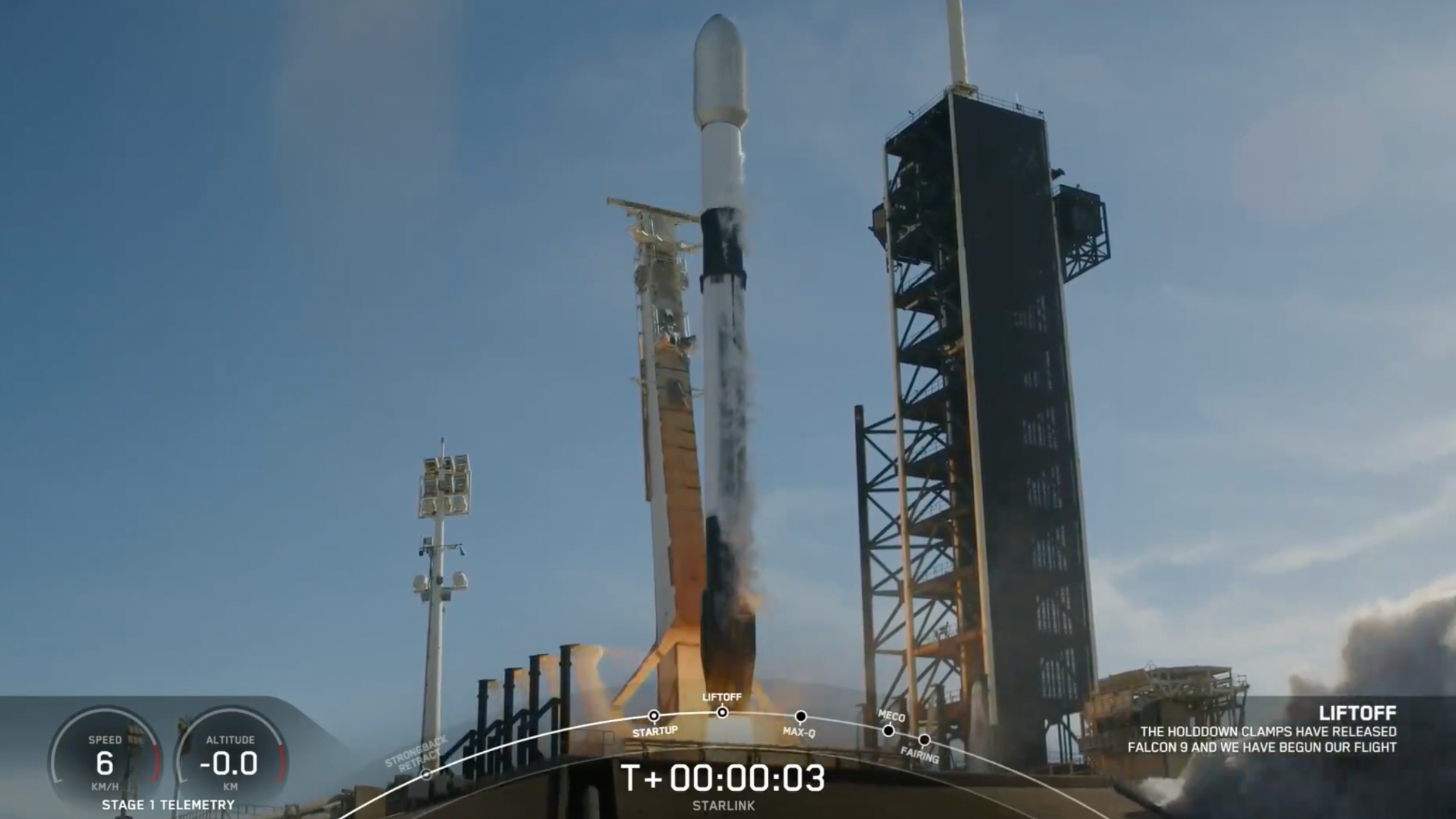The Starlink launches just keep on coming.
A Falcon 9 rocket topped with 23 of SpaceX's Starlink internet satellites lifted off from NASA's Kennedy Space Center in Florida today (April 17) at 5:26 p.m. EDT (2126 GMT).
The Falcon 9's first stage came back to Earth about 8.5 minutes after launch as planned. It landed vertically on SpaceX's Just Read the Instructions droneship, which was stationed in the Atlantic Ocean.
Many of us didn't get to see that milestone in real time; in an unusual occurrence for the company, SpaceX's livestream feed cut out about three minutes after liftoff.
Related: Starlink satellite train: How to see and track it in the night sky

It was the 12th launch and landing for this particular booster, according to a SpaceX mission description. That's eight shy of the company's reuse record, which it set on a Starlink mission just last week.
The Falcon 9's upper stage continued carrying the 23 Starlink satellites toward low Earth orbit (LEO). It will deploy them there about 65 minutes after liftoff, if all goes to plan.
Get the Space.com Newsletter
Breaking space news, the latest updates on rocket launches, skywatching events and more!
This evening's launch was the 39th orbital mission of the year already for SpaceX, and the 26th of 2024 devoted to building out the Starlink network.
The megaconstellation currently consists of more than 5,700 operational satellites, and that number will continue growing far into the future. SpaceX has permission to deploy 12,000 Starlink craft in LEO, and it has applied for approval for another 30,000 on top of that.
Join our Space Forums to keep talking space on the latest missions, night sky and more! And if you have a news tip, correction or comment, let us know at: community@space.com.

Michael Wall is a Senior Space Writer with Space.com and joined the team in 2010. He primarily covers exoplanets, spaceflight and military space, but has been known to dabble in the space art beat. His book about the search for alien life, "Out There," was published on Nov. 13, 2018. Before becoming a science writer, Michael worked as a herpetologist and wildlife biologist. He has a Ph.D. in evolutionary biology from the University of Sydney, Australia, a bachelor's degree from the University of Arizona, and a graduate certificate in science writing from the University of California, Santa Cruz. To find out what his latest project is, you can follow Michael on Twitter.









